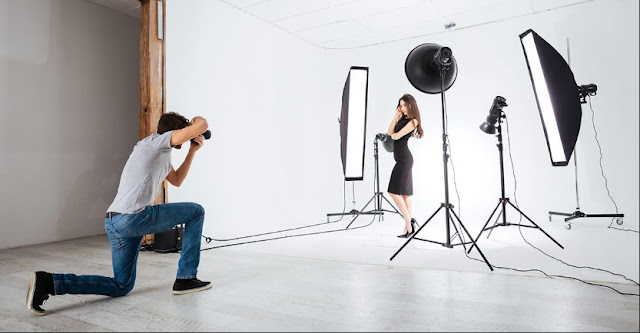Photographing subjects on a white background is one in all those things that appears simple from the surface. However, once you begin creating by removal into the small print, it seems it’s virtually as easy because it appeared initially look.
Unfortunately, having the ability to shoot on a white background is one {in all|one amongst|one in every of} the foremost helpful skills for you to possess in all types of photography together with portraits and pictures. albeit you hate it stylistically, you may eventually have many individuals raise you for a pure white background.
When you get the technique right, there is an entire host of belongings you will simply do together with your photos, like cutting your subjects out for composites. Even once your technique isn’t excellent, there are a bunch of post-processing choices to induce you, and your pictures, there within the finish.
However, this text outlines a method to assist you to get excellent results straight out of the camera when. If you’re handling a high volume of pictures – whether or not that be portraits or merchandise – this could prevent multitudinous hours in post-production.
What you wish
You will want a couple of lights for this system. during this example, there are 3 lights and a reflector.
To get started with shooting on a white scenery in a very studio, you may want a couple of things.
At least 2 studio strobes with modifiers or flashguns (three or four would be preferred and can build your life easier). Softboxes are the simplest choice for your background lights.
White scenery. White is preferred, however, this system can work simply with something up to mid-grey. it's quite doable to try and do it with darker backdrops however to avoid complications, keep lightweight after you will.
Space. you may want the house to induce the most effective results. As represented below, you may keep enough area between your subject and therefore the background to assist forestall spill from the background lights falling on your subject. For portraits, this might simply intermit to fifteen feet of the house added to the gap you're from the topic. For smaller subjects, the house is far less of a difficulty.
(Optional) a lightweight meter. as a result of we’re managing moderately precise ratios, a lightweight meter can assist you here. you'll get by while not one, however, it will build it easier.
Step One – opt for your aperture
Before you are doing something together with your lights or your subject, the primary step during this method is to decide on the aperture you wish to shoot at. This alternative goes to be the idea for everything else you are doing during this method. something from f/8 to f/4 may be a sensible bet for studio portraits, however, you'll opt for something you wish. Your solely real limitation here is that the power output of your lights.
If you decide on f/11, then your background lights can be set a minimum of 2 stops brighter, which might be f/22. you'll struggle to attain that with weak strobes. If that’s the case, then you may opt for a bigger aperture for your final image.
For the rest of this text, the chosen aperture is f/5.6.
Step 2 – lightweight your background
When lighting your background, take the time to make sure that it's equally lit. this can make sure that all of your backgrounds are white with no darker tones crawl into the edges and corners.
Once you recognize your aperture, the succeeding step is to line up your background light(s). If you can, use large, directional modifiers like softboxes. this can facilitate forestall excess lightweight spilling wherever you don’t need it. it'll additionally facilitate to make sure that the background is equally lit from high to bottom, preventing any inconsistencies in exposure in your final pictures.
Place your lights on either facet of your scenery and pointed towards it at a forty-five-degree angle. attempt to position them so you get even coverage.
Step 3 – Set the exposure for your background lights
The easiest thanks to realizing the exposure for your background is to use a lightweight meter. Don’t worry if you don’t have one, you'll still great ape the bar graph to create certain it’s overexposed.
With your lights positioned, all you've got to try and do is about the facility so the camera can record your background as pure white. Your background must be a minimum of 2 or 3 stops brighter than your subject. as a result of the hypothetic aperture we’re victimization is f/5.6, which means the background lights ought to be at f/16 for 3 stops of exposure distinction.
If you’re employing a meter, make sure to ascertain the exposure at the highest and bottom of the background and not simply the center.
Step four – Place your subject for a take a look at
On the left, the topic is simply too on the point of the background and therefore the lightweight is wrapping around her and lighting her front. Placed a couple of feet more away, the topic is rendered as a silhouette. (The detail within the darker image is from the overhead fluorescent that I hadn’t turned off nevertheless.)
To figure out wherever your subject must stand, or be placed, place them before of the background and take a look at shot with solely the background lights on. If they're way enough off from the background, your subject ought to be in excellent silhouette, and there ought to be no lightweight falling on them or wrapping around them in any means.
Where there's lightweight falling on your subject, simply move them more off from the scenery till you attain that excellent silhouette.
If your exposure is correct, you ought to don't have any details in your background and no details in your subject.
Because you're lighting a white (therefore reflective) surface, your background is effectively a lightweight supply and acts like one. the sunshine from your backgrounds can fall off at a rate ruled by the inverse sq. law. What you're making an attempt to try and do is to position your subject in a very place wherever the sunshine level drops enough that it's no result on your subject at your required aperture.
Step four (part 2) – Flag your background lights
To ensure lightweight isn’t going wherever you don’t need it, flag your background lights. Here, I’ve used black cloth and coated well-nigh the section of background which will be within the photos.
It may be that you just can’t attain an ideal silhouette of your subject for a few reasons. This issue will arise from not having enough houses to figure in, or it may be that your modifiers are manufacturing an excessive amount of spill. a way to combat this can be to flag your lights.
Flagging merely suggests that to dam lightweight from wherever you don’t need it. you'll do that in any means that you just need. V-flats and black curtains (as within the example images) are each low-cost and effective way in which to flag your lightweight.
Simply place your most well-liked flags in a very manner that blocks excess lightweight from coming towards the camera, however, it doesn’t interfere with the part of the background which will finish up in your composition.
Step five – Place your key lightweight
Once the background lights are done, you'll lightweight your subject in any means you wish.
Now that your background is lit and you recognize wherever your subject must be, you simply ought to lightweight your subject. All you've got to try and do is place your lightweight any means that you just need (any lighting pattern can work), and set the facility to your required aperture (f/5.6 within the examples).
Unlike the background lights, you oughtn't to worry regarding what any excess lightweight from your key lightweight is doing. as a result of you're up to now off from the background with a lightweight set to a way lower power, it'll have very little to no result on the ultimate exposure of the background. However, do listen to what the sunshine is doing off to the edges. If it’s firing into a close-by whitewall or another white surface, then that surface can act as a reflector in your pictures.
Step vi – Add fill (optional)
Use fill lighting to scale back the impact of significant shadows in your pictures. you'll use another lightweight if you want, or a reflector as shown here.
If you wish to feature a fill lightweight to your set-up, you'll currently do this as traditional. you'll fill with another scientific instrument, otherwise, you will use a reflector as shown within the example pictures. the most factor to recollect regarding fill lightweight is that it ought to be a minimum of one-stop lower in power than your key lightweight.
Step seven – Check your final exposure
With everything set-up, you ought to have an ideal white background straight out of the camera.
With everything in situ, take a look at shot at your required aperture. If your key and fill lights are in your required position, everything ought to be spot on and you ought to currently have a picture with a wonderfully white background straight out of the camera.
That’s it
This isn’t a tough technique, however, it will need a good few steps and loads of attention to detail. Don’t be postpone by any of that. Once you’ve set it up a couple of times, it'll become use terribly quickly. you may even be ready to find out how to line it up in a very couple of minutes, doubtless saving you a ridiculous quantity of your time post-processing backgrounds that aren’t absolutely white.
More Article for Photography Tips

Posted by Md. Shakil Ahamed
Clipping Path EU Ltd a very well-known photo editing company in the world.Clipping Path EU Ltd providing you all type of photo editing service like as Clipping Path service,Background Remove,Image Masking,Neck Joint,retouching, photo manipulation,drop shadow and Color Corrections. A large of professional photo editing expert are waiting to serve you so that why delay come first and get quality work.You may like these posts
More About Our Service
Clipping Path EU IS the Best Image Editing Company at present. This company provides all types of image editing works to follow your instructions. clipping path service, Image Masking Service, backgropund removal service, Neck Joint Service, Photo Retouching Service, Ecommerce product Image Editing, Jewelry product image editing, and other photo editing service you can get here at a reasonable price. For checking our quality you can get a free trial option ( 3 images accepts for trial ) Now Click Free Trial Now
Random Posts
3/random/post-list
Popular Posts
Footer Menu Widget
Crafted with by TemplatesYard | Distributed by Blogger


4 Comments
Thanks for sharing this informative post about Photography tips
ReplyDeleteThanks for your words
DeleteNice post. Your tutorial is very informative and effective for us. Thanks for sharing with us.
ReplyDeleteI am glad that is informative.
Delete